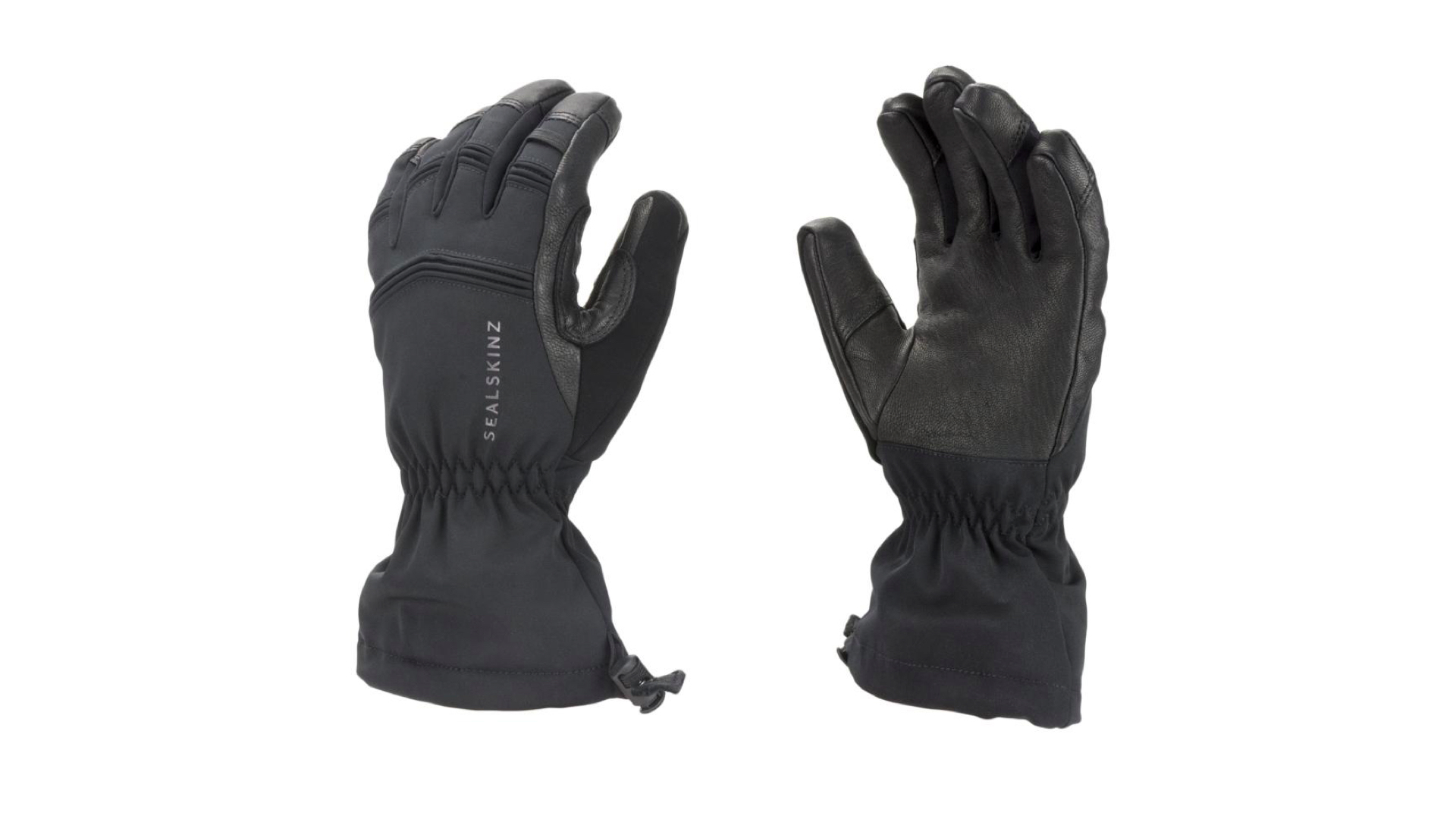Advnture Verdict
With a close fit and innovative gusseted finger joints, these technically advanced gloves offer excellent dexterity for such a warm and waterproof winter glove. The only drawback of the design is that it results in lots of stitching, which seems a potential weak point.
Pros
- +
Close fit
- +
Good dexterity
- +
Warm
- +
Waterproof
Cons
- -
No wrist leash
- -
Lots of stitching
- -
Expensive
You can trust Advnture
Sealskinz Waterproof Extreme Cold Weather Gauntlet: first impressions
For seasoned mountaineers and winter hillwalkers Sealskinz’ Waterproof Extreme Cold Weather Gauntlet are burly insulated gloves designed to keep your hands warm, dry, and protected from the elements in frigid temperatures.
To achieve that, they combine tough materials with high-performance synthetic fill, along with a microfleece lining and a fully waterproof insert. The wadding that provides the warmth is PrimaLoft Gold, a continuous filament block insulation that is widely regarded as one of the best synthetic fills out there (see also: Down vs synthetic insulation: which is best for keeping warm?). Waterproofing comes from Sealskinz’ own PU-based membrane – the same technology used in the brand’s famous waterproof socks.
Meanwhile, the thumbs, palms and fingertips are made from hard-wearing goatskin, as is the double-stitched overlay at the base of the thumb. The cuff and back of the glove is polyester, which feels reasonably tough, though is unlikely to match the long-term durability of the high-denier nylon used by some of other gloves we tested for our best hiking gloves buying guide.
However, the design of these gloves offers superior feel and dexterity to most others in their class, thanks to pre-curved, rollover fingertips and unique fabric gussets at the knuckles and finger joints. This aids freedom of movement, while also ensuring a closer fit. The slim, sculpted fingers feel far less unwieldy than most winter gloves on the market.
The extended cuff gives good wrist protection, with an elasticated binding and a drawcord closure. There’s a soft suede nose wipe too – a welcome feature for bitterly cold days. The only thing perhaps lacking is a wrist leash to prevent a glove from flying off down the mountainside if you do need to remove one, but that’s hardly a dealbreaker.
• RRP: $100 (US) / £75 (UK)
• Sizes available: S / M / L / XL
• Gender specificity: Unisex
• Colors: Black
• Weight: 212g / 7.5oz
• Materials: Polyester and elastane shell with goat leather palm and reinforcements, waterproof insert and PrimaLoft Gold insulation, polyester lining
• Compatibility: Designed for a range of cold-weather outdoor pursuits, these gloves are particularly good for winter hill hiking and mountaineering
Sealskinz Waterproof Extreme Cold Weather Gauntlet: on the trail
Our test pair of Sealskinz’ Waterproof Extreme Cold Weather Gauntlet fitted really well, with a surprisingly close and dexterous feel compared to most other bulky winter gloves. The pre-curved design of the fingers, rollover fingertips and gusseted panels at the knuckles and finger joints all are well-designed elements that definitely help them fit… well, like a glove. Sizing is unisex but ranges from S to XL.
They also proved to be waterproof and warm too – obviously, not quite as warm as a mitt, but certainly toasty enough to keep hands cozy during a cold November in Snowdonia, even without a ‘thinny’ liner glove underneath (see also: Gloves vs mittens: which is best for winter sports?). The microfleece liner is extremely soft and inviting, and wicks reasonably well, though we perhaps experienced a little more moisture build-up than you might get with a pile fleece liner. Still, they’re reasonably quick drying, so our hands stayed comfortable throughout the day.
The goatskin leather reinforcements on the palm, fingers and thumb provided good grip, making these gloves ideal for use with trekking poles, an ice axe or when getting hands-on during winter scrambles. We did note that the leather itself, while being extremely supple, felt slightly thinner than that used in the most robust rivals.
In turn, this points to our only real reservation about these gloves, which would be how they’d cope long-term with general wear and tear. Winter mountaineering can be tough on gloves, and the fabric looks slightly susceptible to abrasion (especially since it is made of polyester rather than nylon, which is a stronger fibre for its weight). Similarly, all that clever patterning inevitably means lots of stitching, which again is a common failure point in gloves. Having said that, after a month of pretty hard use they didn’t show any signs of weakness. As a general all-round outdoor glove, they’re certainly fit for purpose.
They are fitted with a handy loop on the index finger to make them easy to pull off or clip to a carabiner during more technical mountain use. It’s just a shame they don’t have a wrist loop to ensure they’re slightly easier to pull on again, nor a wrist leash to keep them securely attached in wild and windy weather. We had to be careful to make sure we didn’t lose one on the hillside. Still, we liked the fact that the microfleece inner is firmly attached to the shell, and we experienced no annoying liner pull-out.
An outdoors writer and editor, Matt Jones has been testing kit in the field for nearly a decade. Having worked for both the Ramblers and the Scouts, he knows one or two things about walking and camping, and loves all things adventure, particularly long-distance backpacking, wild camping and climbing mountains – especially in Wales. He’s based in Snowdonia and last year thru-hiked the Cambrian Way, which runs for 298 miles from Cardiff to Conwy, with a total ascent of 73,700 feet – that’s nearly 2½ times the height of Everest. Follow Matt on Instagram and Twitter.


